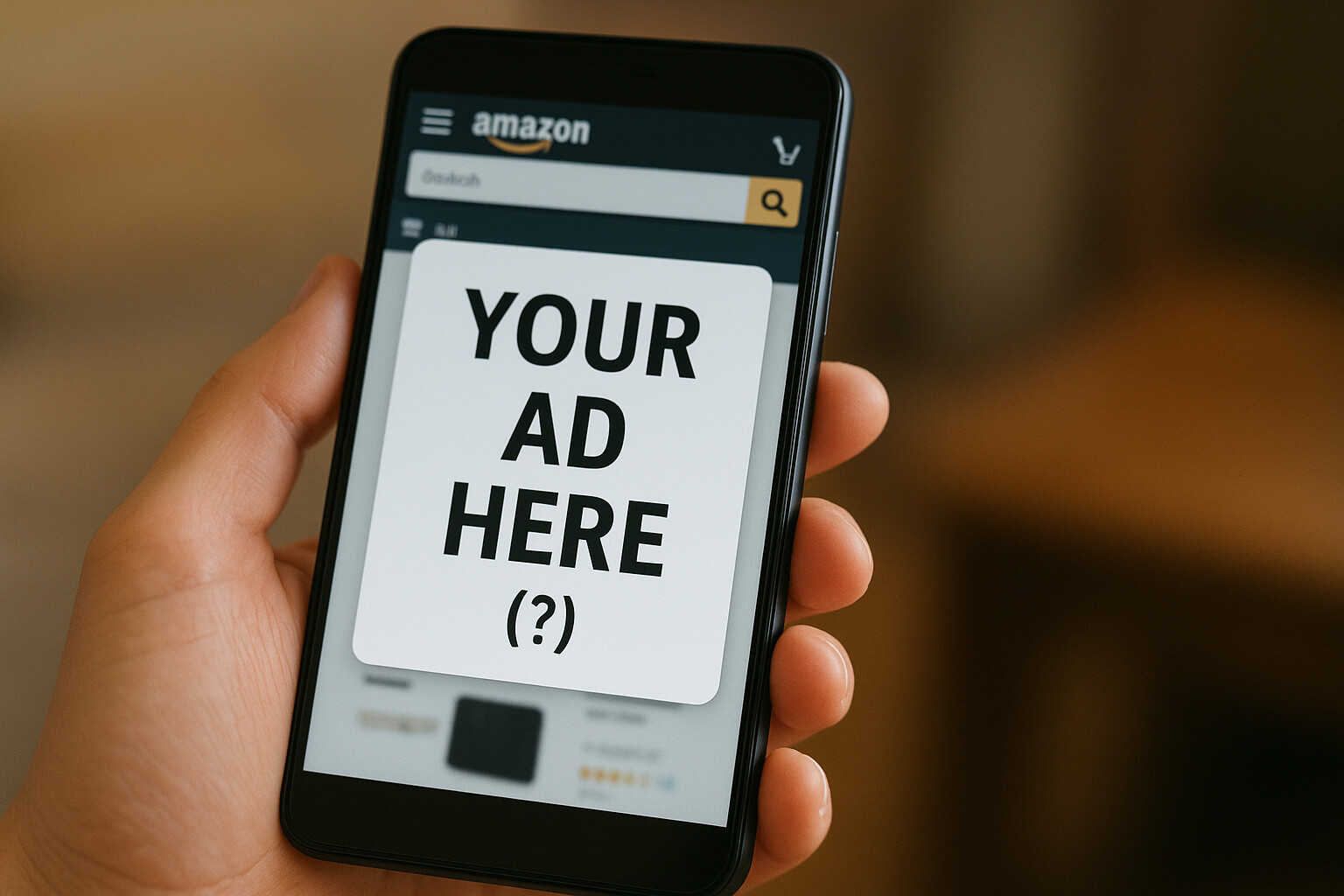Amazon Price Glitch – Every Seller’s Nightmare

On an enormous platform like Amazon, glitches are inevitable. They take the form of products losing their ranking for a day (search glitches) or rank positions fluctuating wildly throughout the day (known as “Amazon search shuffle”). However, an Amazon price glitch – meaning that the price is involuntarily set too high or too low for a short period of time – is the one that makes every seller’s heart stop for a second, simply because there is no scenario where this has a positive effect for your business. In this article, we are going to look at how to spot price glitches, how Amazon handles them and how you can handle them as a seller – and how you can avoid them.
TL;DR
What it is: An Amazon price glitch means your product price drops (or spikes) involuntarily — never good for sales, margins or platform visibility of your products.
Penny pricing: The most infamous glitch. Items drop to extremely low, down to several cents or pennies – hence the name. Today, it usually happens due to seller misconfiguration, manual typos, sync issues, or catalog/API bugs.
Other glitches: Manual errors like misplacing a decimal point (you enter €1.99 or €199.90 instead of €19.99), discount stacking, currency conversion errors, and synchronization problems (if you sell on multiple platforms) can also cause unintended pricing.
Finding glitches: Tools like Keepa or CamelCamelCamel, plus deal forums (MyDealz, Slickdeals, HotUKDeals) and browser extensions (Honey, Cently) help buyers spot them fast.
Amazon’s response:
Seller safeguards: Use modern repricers with min/max limits (e.g. SELLERLOGIC), enable alerts, secure multi-channel sync, test new rules in safe mode, and run manual spot-checks.
Bottom line: Amazon price glitches are rare but costly. Prevention is key — the right tools and settings protect both margins and account health.
How Amazon Price Glitches Occur
An Amazon glitch can affect prices in two ways. It can drive the prices down, which causes sellers to sacrifice margins heavily, or it can drive prices to unwanted heights, which causes sellers to sacrifice sales and visibility. Due to Amazon’s high price sensitivity, none of these scenarios are good for your business. But why do they happen in the first place? There are several reasons why this happens, the main ones being technical errors, algorithmic miscalculations, or mistakes in third-party seller listings. Let’s take a closer look at the different forms Amazon price glitches can take.
Penny Pricing – The Reason Why Rule-Based Repricing Went Out of Fashion
A regular occurrence is the “penny pricing” error, where items accidentally appear for just a few cents. This happened regularly in the early days of repricers, when rule-based repricing software misfired, undercutting competitors until prices hit near zero. Thankfully, repricers have come a long way since then. Nobody uses rule-based repricing anymore and the last incident that really cut into sellers pockets was over ten years ago, where a repricer glitch slashed thousands of UK listings to £0.01, leaving sellers with heavy losses.
The outrage in the seller community was so strong that many companies redeveloped their tools and launched a new generation of dynamic – and today even AI-driven – repricers with built-in safeguards to ensure such mistakes could never happen again. It was also the spark that led to the creation of SELLERLOGIC.
However, penny pricing still occurs, here are the main reasons.
Discount Stacking
Another type is the discount stacking glitch, where multiple coupons, promotions, or Subscribe & Save offers overlap, slashing prices far beyond what Amazon or sellers planned.
Conversion Glitches
There are also currency conversion glitches, where items that are displayed across different regional marketplaces show a wrong price. For example, a product listed in the U.S. might show up at a dramatically reduced cost in another marketplace due to exchange rate miscalculations.
Synchronization Errors
Occasionally, system synchronization errors between Amazon’s catalog and third-party seller feeds cause products to show outdated or wrong prices. Shoppers may also notice flash sales glitches, where a Lightning Deal or Prime Day offer applies to unintended products.

Finding a Price Glitch on Amazon
Unfortunately for buyers and sellers, there is no Amazon price glitch finder tool (yet). However, an effective strategy is to use price-tracking tools such as Keepa or CamelCamelCamel. These services record historical price data and enable you to set alerts should a sudden drop occur. If an item that usually costs €100 suddenly shows up at €1, you’ll receive a notification.
Deal-hunting communities also play a huge role. Sites like HotUKDeals, MyDealz, Slickdeals, or Reddit’s r/deals are filled with bargain hunters who share glitches the moment they find them. Joining these groups means you benefit from the collective speed of thousands of shoppers.
Additionally, browser extensions like Honey or Cently highlight discounts as you browse. While not designed exclusively for glitches, they can flag unusual bargains.
How Does Amazon Handle Price Glitches?
This depends heavily on who is at fault.
Amazon is at fault: If the error comes from Amazon itself – for example, through a discount-stacking bug or a catalog issue – the orders are usually unshipped automatically from Amazon’s side. In these cases, customers are refunded, and sellers are not penalized. In larger incidents, Amazon may even step in retroactively to cancel affected orders and shield sellers from account health issues or negative feedback.
The seller is at fault: The situation is different if the Amazon price glitch can be traced back to the seller’s account. Most Amazon price glitches from sellers today are due to human error. Amazon generally holds the seller responsible for this, and orders placed at the wrong price are expected to be fulfilled. As an example: If you manually input a wrong price, a buyer purchases that wrongly priced item and you cancel the sale, it will damage your account health by triggering buyer complaints, negative reviews, and – worst case scenario – will lead to you losing your Buy Box eligibility.
What Safeguards Can You Set in Place as a Seller?
Ironically, the main reason for Amazon price glitches back in the day is now the best safeguard against them: automating your pricing strategy. As mentioned above, many repricers were created and redeveloped in the wake of the Amazon glitch faux pas from 2014.
Modern Repricers like the one from SELLERLOGIC all include safeguards like min/max price settings, where you can set the range in which the repricer should implement your pricing strategies. If you set these correctly, you run no risk of an Amazon price glitch occurring.
If you’re using multi-channel software, make sure it has strong synchronization controls so data feeds can’t overwrite prices with defaults like €0.01.
Enabling alerts and notifications is another smart step, since many tools can warn you immediately if a product drops outside your defined safe range.
On top of that, sellers should use a “safe mode” or test mode when setting up new repricing strategies, allowing them to see how the rules behave before going live. Finally, it’s worth building a routine of manual spot-checks, especially during sales peaks or after major listing
Final Thoughts
An Amazon pricing glitch may be rare, but as a seller, even one incident can be costly. The best protection is prevention: with a solution like the SELLERLOGIC Repricer, you can set clear minimum and maximum price limits to ensure your items never fall outside a safe range. While Amazon may step in and cancel orders if a glitch is caused by their own system, you can’t rely on the same protection when the error comes from your side. In the end, safeguarding your pricing strategy is in your hands — and the right tools make all the difference.
FAQs
No, but you can use price tracking tools like Keepa or CamelCamelCamel.
Amazon pricing errors are rare but not unheard of. Large-scale glitches like the 2014 penny pricing fiasco are unlikely today, thanks to modern repricers with safeguards. Most current errors come from seller misconfigurations, manual typos, or sync issues. While uncommon, even one pricing glitch can cause costly consequences.
Yes, pricing errors on Amazon can largely be avoided with the right safeguards. Sellers should set minimum and maximum price limits in repricers or Seller Central, use tools with alerts and notifications, and test new pricing rules in safe mode. Regular manual spot-checks and secure multi-channel sync also help prevent costly mistakes.






